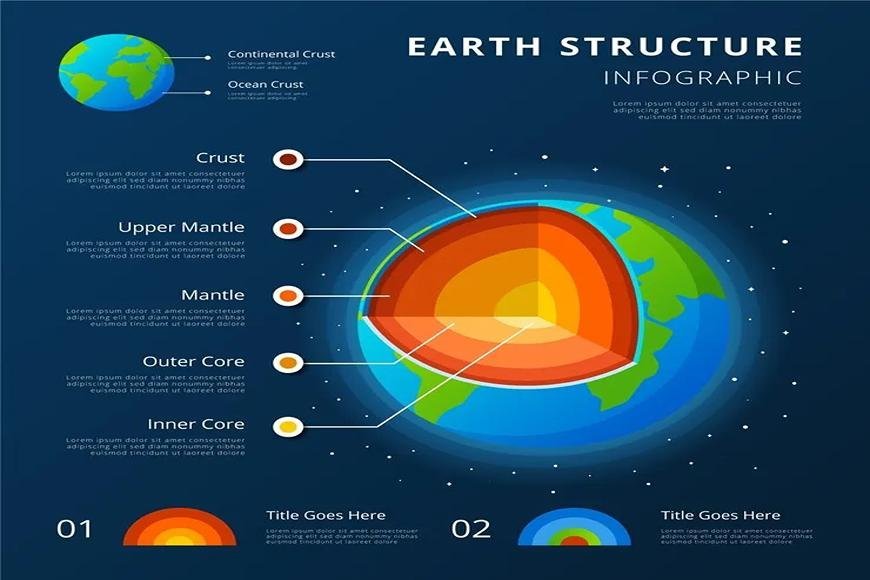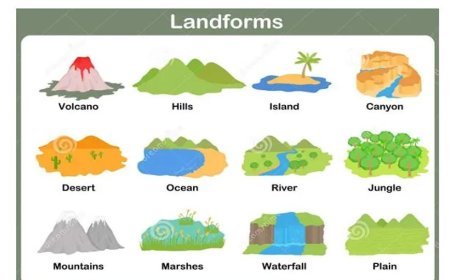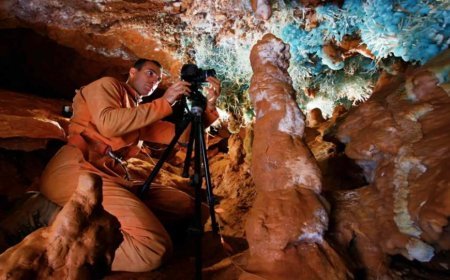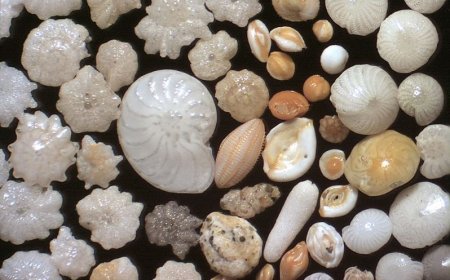THE STRUCTURE OF THE EARTH
Hidden Layers: Unveiling the core, mantle, and crust - our planet's building blocks.

THE STRUCTURE OF THE EARTH
- There are three sections inside the earth: the crust, the mantle, and the core.
- The crust is the earth's top layer, and the core, which is 2900 km deep, is its thickest layer.
Here are the three layers that make up the earth's crust:
The Crust
The Mantle
The Core
The Crust
- The crust is the top solid layer of the earth. It is thin and its thickness changes depending on whether it is marine or continental.
- The crust of the ocean is thinner than the crust of the land.
- Where there are big mountain ranges, the continental crust is thicker.
- The crust is made up of rocks that are heavy and have densities of 3 g/cm3.
- The crust of the oceans is home to basalt rocks.
- The base of the ocean is 2.7 g/cm3 in terms of mass.
- Because of this, it is often shortened to SIAL. SIAL can also be utilised for discussions regarding the lithosphere.
The Mantle
- There is a solid part of the Earth's core called the mantle that goes below the surface.
- That part of the shell is less thick than this one.
- It is between 10 and 200 km thick.
- The mantle goes down to a depth of 2,900 km from Moho's fissure.
- The asthenosphere is the top layer of the mantle and the main source of magma that rises to the surface during volcano explosions.
- The crust and the top layer of the mantle make up the lithosphere. It's also called SIMA because silicon and magnesium are important parts of the mantle.
The Core
- About 2,900 km below the surface is where the core and mantle meet.
- The core inside is solid, and the core outside is liquid.
- The core is mostly made up of nickel and iron, which are very heavy metals.
- Because of this, it's sometimes called the "nife" layer.
What's Your Reaction?



































